|
Acherontia atropos (Death's
head hawkmoth) [= Sphinx atropos]
Life
> Eukaryotes >
Opisthokonta >
Metazoa (animals) > Bilateria > Ecdysozoa >
Panarthropoda > Tritocerebra > Phylum:
Arthopoda > Mandibulata >
Atelocerata > Panhexapoda >
Hexapoda
> Insecta (insects) > Dicondyla > Pterygota >
Metapterygota > Neoptera > Eumetabola > Holometabola > Panorpida >
Amphiesmenoptera > Lepidoptera (moths
and butterflies) > Glossata > Coelolepida > Myoglossata > Neolepidoptera >
Heteroneura > Ditrysia >
Apoditrysia > Obtectomera >
Macrolepidoptera >
Bombycoidea > Family: Sphingidae (hawkmoths) >
Subfamily: Sphinginae
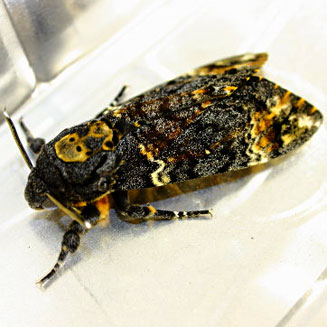 |
|
|
Acherontia atropos (Death's
head hawkmoth), Brits,
Northwest Province, South Africa, 9 October 2011. [photo Mike Nyenes ©] |
|
|
xxx |
Life cycle
|
Adult
When handled the moth emits a
loud squeaking sound made using the curled up proboscis. The
adult moth raids bee hives for honey. |
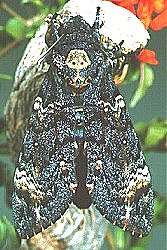
Photo H.L. O'Heffernan, © Iziko |
|
Egg
Eggs are laid singly on leaves of a wide variety of plant species but especially
on those in the potato family (Solonaceae). |
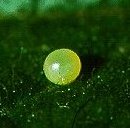
Photo H.L. O'Heffernan, © Iziko |
|
1st instar larva. |
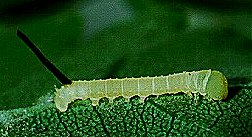
Photo H.L. O'Heffernan, © Iziko |
|
2nd instar larva. |
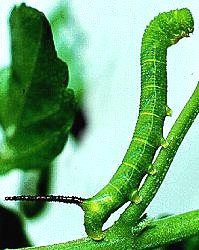
Photo H.L. O'Heffernan, © Iziko |
|
Final (5th) instar larva
When disturbed, the
caterpillar is able to make a clicking sound by clashing its
mandibles together. The sound is evidently similar to that made by clicking the
finger-nail under the thumb nail or to the sound made by an electric spark. |

Photo © H. Robertson, Iziko
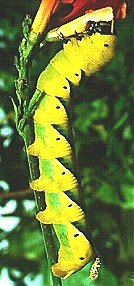
Photo H.L. O'Heffernan, © Iziko
|
|
Pupa
The larva buries itself in soft soil about 15 cm below the soil surface and
makes an earthen cell around itself by pressing back the soil with its head.
Over a period of about two weeks it forms the pupal skin and pupates. The pupal
stage lasts 2-3 weeks in summer, or if it is at the end of summer, it
might overwinter in this state and emerge once temperatures warm up. |
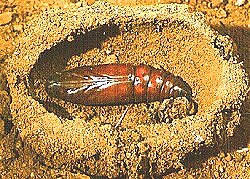
Photo H.L. O'Heffernan, © Iziko |
| |
|
Distribution
Found throughout Africa,
Madagascar and most of Europe. A slightly different form, regarded by some as a
separate species, is found throughout Asia.
Derivation of name
The Death's head hawk moth is so called because of the
skull-like pattern on the thorax. As far as the latin name is concerned,
according to Pinhey
(1975): "Atropos, one of the Fates, was a daughter of Nox and Erebus
and was illustrated... with veiled face and a pair of scissors to cut the thread
of life. This is the thoracic pattern of a mask with scissors below it. A
sinister but undeserved portrait."
Host-plants in southern Africa
Eggs are laid on, and larvae feed on, a wide variety of
plants including:
References
Links
Text by Hamish Robertson, Iziko. |
